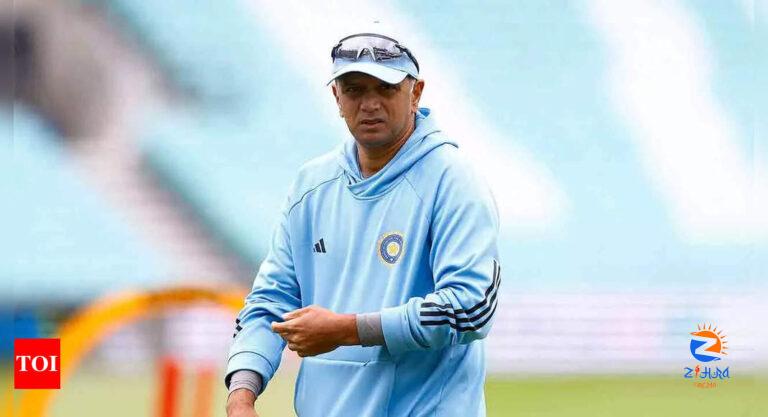
[ad_1]
NEW DELHI: When Rishabh Pant and Washington Sundar were pulling off a heist against Australia at the Gabba in January 2021, they represented the strong feeder system that the Indian cricket board (BCCI) had built for half a decade. Multiple options waiting in the wings meant India had an enviable battery of pace bowlers and able batters for India to go through the throes of transition.

09:31
Another WTC Final, another loss for Team India
Two years later, the Test cupboard seems bare. Rahul Dravid, basking in the glory of building a healthy pipeline, cuts a helpless figure as Team India’s head coach. The BCCI has now gone five months without a chairman of selectors after Chetan Sharma stepped down.
The India ‘A’ programme, which was Dravid’s calling card as in-charge of National Cricket Academy (NCA), has seen very little movement. And the injury-management programme seems to be crippled for a while now.
Team India’s performance in the WTC final was disappointing. Many of the senior players showed a lack of discipline and hunger. It’s time to groom youngsters. A rough road might lie ahead because Test players take time to mature. But that’s the right way to go.
As president of BCCI, Sourav Ganguly had told TOI last year that the board had decided against ‘A’ tours during Ranji Trophy season as it wanted all its top domestic players to play in the premier domestic championship. TOI also understands that there is reluctance on part of other boards to host India ‘A’ team because it is seen as a financial burden. All this meant that the board failed to work out a calendar which could help them prepare a strong second line of cricketers.
Former India selector Devang Gandhi, who worked with Dravid closely on ‘A’ tours, highlights the importance of developmental tours which happened around the year. “I understand you don’t want to dilute the Ranji Trophy. But during our tenure, there were ‘A’ tours of South Africa and Australia in July-September. Hardik and Siraj are products of those tours. We had ‘A’ tours in England as well that paved the way for Rishabh Pant and Hanuma Vihari. Dravid used to be in touch with the Indian team and asked them what they wanted. He used to play the boys in situations accordingly. Dravid himself was an integral part of the planning of the ‘A’ tours,” Gandhi told TOI.
As it stands now, there is a headless selection committee which has to first think about the ODI World Cup starting in four months and also worry about creating a pool of players that the previous team management had to play with. The likes of Navdeep Saini and Avesh Khan who were identified by the previous team management as India’s red-ball pacers have suddenly fallen off the radar. With no ‘A’ tours now, their redemption has become difficult. The unravelling of Vihari and Sarfaraz Khan‘s lack of improvement against top notch pace bowling is also a case in point.
It’s time the impending transition took place. Virat Kohli, after losing the last World Test Championship final in 2021, had hinted that India needed to look ahead. To be fair to Dravid, he did try to carry out a transition last year by dropping Cheteshwar Pujara, Ajinkya Rahane, Ishant Sharma and Wriddhiman Saha. A couple of injuries later, Pujara and Rahane were back.
“The team management has to decide who is more likely to play a WTC final if they make it after two years. Pujara, Umesh, Unadkat, Rohit and Rahane all will be in their late 30s. We did the same thing with Shikhar Dhawan and Murali Vijay. That’s how Prithvi Shaw and Shubman Gill were groomed. Gill was picked for India ‘A’ ahead of Anmolpreet Singh on the basis of one century despite Anmolpreet having scored nearly 800 runs in Ranji Trophy. India ‘A’ was always a look-at future programme,” Gandhi said.
BCCI has tried to bring a major transition in T20 cricket after a couple of disappointing T20 WC campaigns. The Oval capitulation may trigger another such movement in red ball format.

[ad_2]